Kottaiyur Kodeeswarar Temple
Kottaiyur Kodeeswarar Temple is a Hindu temple dedicated to the god Shiva, located in the village of Kottaiyur, Thanjavur district, Tamil Nadu, India. The temple is one of the 275 Paadal Petra Sthalams, the sacred sites mentioned in the Saiva canon of the 7th–8th centuries CE, the Tevaram, composed by the three Tamil Shaivite saints, Appar, Sundarar, and Tirugnanasambandar.
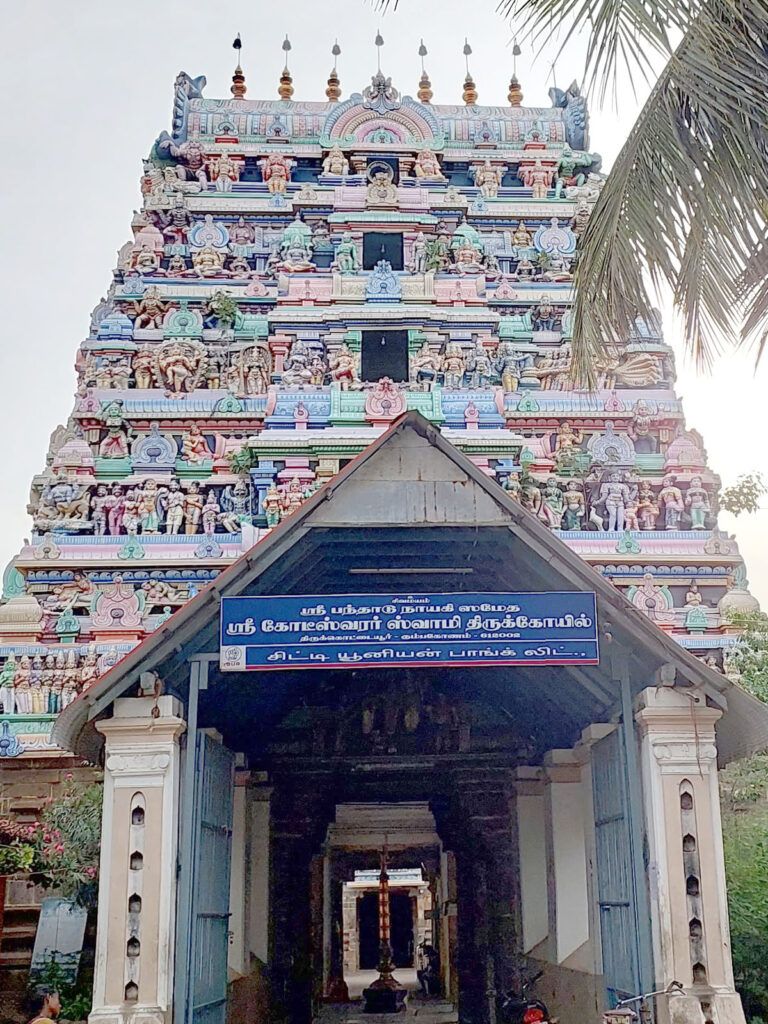
Contents
- 1 History of Kottaiyur Kodeeswarar Temple:
- 2 Legend of Kottaiyur Kodeeswarar Temple:
- 3 Myths of Kottaiyur Kodeeswarar Temple:
- 4 Kottaiyur Kodeeswarar Temple Timing and Festivals:
- 5 Significance of Kottaiyur Kodeeswarar Temple:
- 6 Places to visit near Kottaiyur Kodeeswarar Temple:
- 7 FAQ:
- 7.0.1 Where is the Kottaiyur Kodeeswarar Temple located?
- 7.0.2 What is the history of the Kottaiyur Kodeeswarar Temple?
- 7.0.3 What are the main features of the Kottaiyur Kodeeswarar Temple?
- 7.0.4 What are the festivals celebrated at the Kottaiyur Kodeeswarar Temple?
- 7.0.5 How can I get to the Kottaiyur Kodeeswarar Temple?
- 7.0.6 What are the opening hours of the Kottaiyur Kodeeswarar Temple?
- 7.0.7 What are the entry fees for the Kottaiyur Kodeeswarar Temple?
- 7.0.8 What are the dress codes for the Kottaiyur Kodeeswarar Temple?
- 7.0.9 What are the things to keep in mind while visiting the Kottaiyur Kodeeswarar Temple?
- 8 How to reach Kottaiyur Kodeeswarar Temple:
- 9 Google Maps:
History of Kottaiyur Kodeeswarar Temple:
Lord Koteeswarar holds a significant place in the Tevaram, a renowned Tamil Saiva canonical work from the 7th century. This masterpiece was written by the Nayanmars, a group of Tamil saint poets, and it classifies Lord Koteeswarar’s temple as one of the Paadal Petra Sthalam, which includes 275 revered temples.
According to historical records, the temple was originally constructed in the 7th century under the patronage of Pallava king Nandivarman II. Throughout the centuries, it has undergone renovations and expansions under the rule of various dynasties, such as the Cholas, Pandyas, and Vijayanagara rulers.
Legend of Kottaiyur Kodeeswarar Temple:
The Kottaiyur Kodeeswarar Temple has a fascinating legend that tells the story of Suruchi, the son of Sathyarthi, the ruler of Trihartha kingdom. Suruchi was known for his cruel and arrogant behavior towards his subjects. As a result, he was cursed by a sage and turned into a devil.
Suruchi was ashamed of his appearance and prayed to Shiva for help. Shiva appeared before him and advised him to take a holy dip in the spring located in the temple. Suruchi followed Shiva’s advice and was able to regain his original form.
Even today, the spring in the temple is believed to have the power to cure deformities. Women also take a holy dip in the spring to enhance their appearance.
Another legend associated with the temple is that the sage Herandar (Athreya) worshipped Shiva at this place. The goddess Pandhadu Nayagi, who is believed to toss the curses of devotees off their suffering, got her name from this temple.
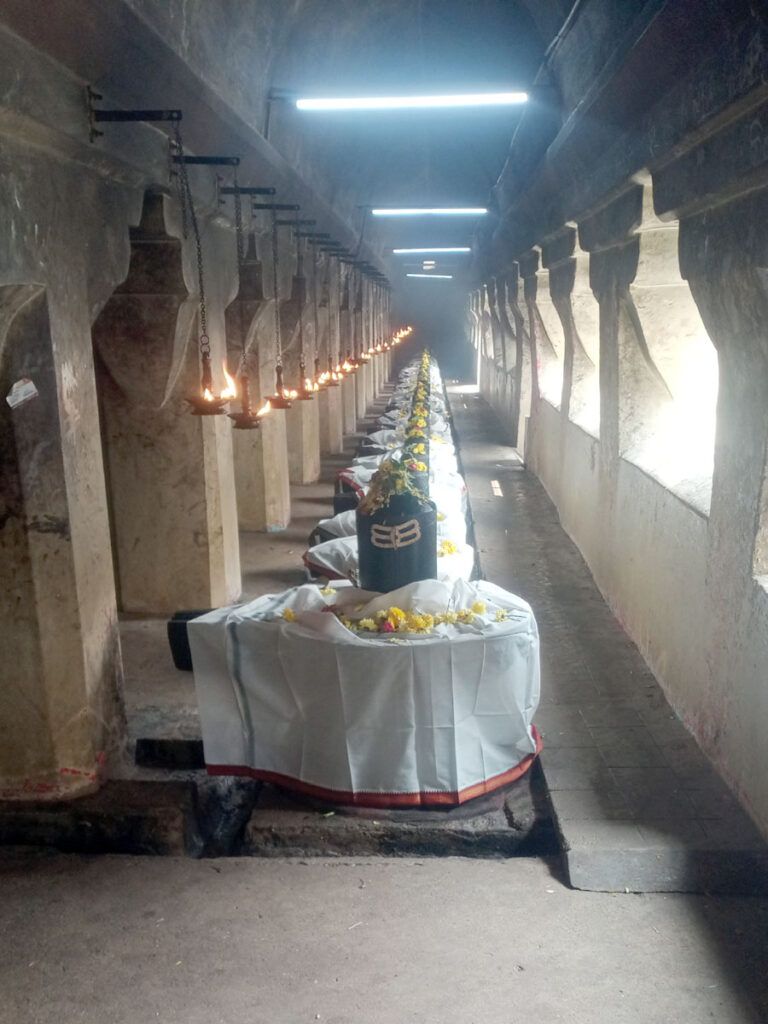
Myths of Kottaiyur Kodeeswarar Temple:
- The myth of the castor oil tree
The temple is named after the castor oil tree (Herandam in Sanskrit) that is located nearby. According to legend, the tree was planted by the sage Herandar, who worshipped Shiva at this temple. The sage is said to have attained moksha (liberation) under this tree.
- The myth of the rakshasa
There is another legend about a rakshasa (demon) named Suruchi who was cursed to take the form of a disfigured man. The rakshasa was so ashamed of his appearance that he hid in the forest. However, he was eventually discovered by a group of people who were hunting in the area. The people were terrified of the rakshasa and ran away.
Suruchi was very sad and lonely. He prayed to Shiva for help. Shiva appeared before Suruchi and told him that he would be cured of his curse if he worshipped him at the Kottaiyur Kodeeswarar Temple. Suruchi did as Shiva instructed, and he was eventually cured of his curse.
- The myth of the sins
It is believed that the sins committed at the Kottaiyur Kodeeswarar Temple are multiplied by a crore (10 million). This is because Shiva is said to be especially powerful at this temple. As a result, people who worship Shiva at this temple are said to be rewarded for their good deeds and punished for their sins to a greater extent than at other temples.
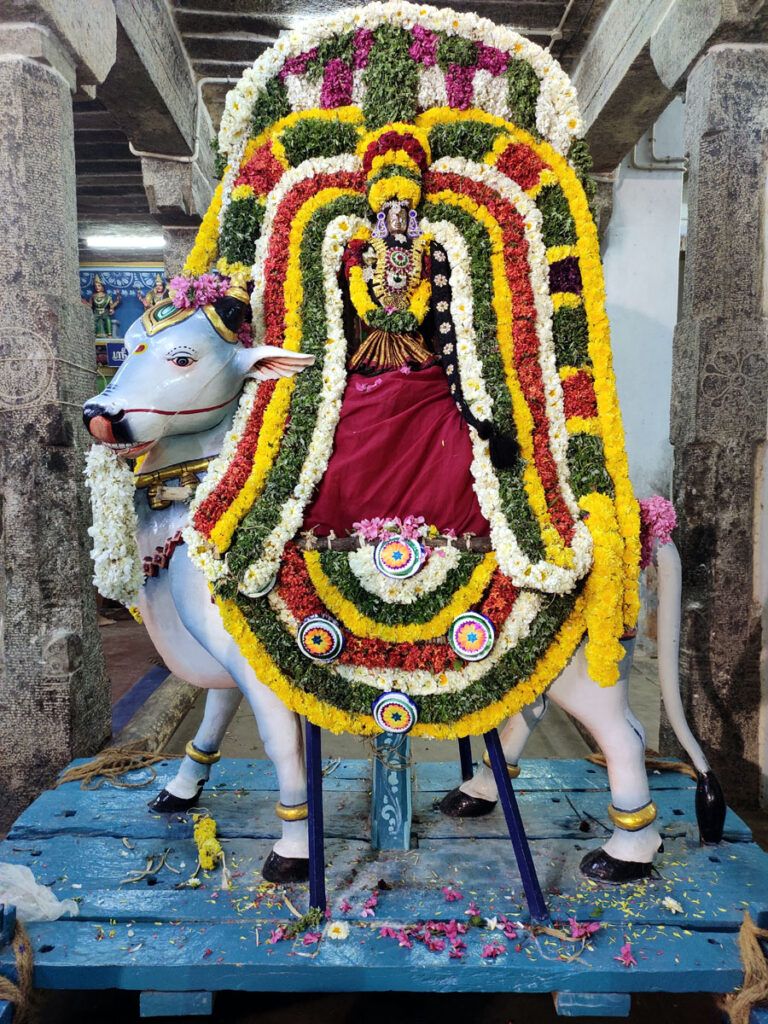
Kottaiyur Kodeeswarar Temple Timing and Festivals:
Timing
The Kottaiyur Kodeeswarar Temple is open from 6:00 AM to 12:00 PM and 4:00 PM to 8:00 PM. The temple is closed on Mondays.
Festivals
The Kottaiyur Kodeeswarar Temple celebrates a number of festivals throughout the year. The most important festival is the Maha Shivaratri festival, which is celebrated in February or March. This festival is a time for devotees to gather at the temple to worship Shiva.
Other festivals celebrated at the temple include the Navaratri festival, the Karthigai Deepam festival, and the Panguni Uthiram festival.
Maha Shivaratri
The Maha Shivaratri festival is a major Hindu festival that celebrates the night of Shiva’s wedding to Parvati. The festival is celebrated on the 14th night of the dark half of the month of Phalguna (February-March).
At the Kottaiyur Kodeeswarar Temple, the Maha Shivaratri festival is celebrated with great pomp and ceremony. The temple is decorated with lights and flowers, and special pujas are performed to Shiva. Devotees from all over the state gather at the temple to participate in the festivities.
Navaratri
The Navaratri festival is a nine-day Hindu festival that celebrates the victory of good over evil. The festival is celebrated in the month of Ashvin (September-October).
At the Kottaiyur Kodeeswarar Temple, the Navaratri festival is celebrated with special pujas to Durga, the Hindu goddess of power and strength. The temple is also decorated with nine pots, each of which represents one of the nine forms of Durga.
Karthigai Deepam
The Karthigai Deepam festival is a Hindu festival that celebrates the birth of Karthikeya, the son of Shiva and Parvati. The festival is celebrated on the 1st day of the month of Karthigai (November-December).
At the Kottaiyur Kodeeswarar Temple, the Karthigai Deepam festival is celebrated with a special puja to Karthikeya. The temple is also decorated with lights and fireworks.
Panguni Uthiram
The Panguni Uthiram festival is a Hindu festival that celebrates the wedding of Shiva and Parvati. The festival is celebrated on the 15th day of the month of Panguni (March-April).
At the Kottaiyur Kodeeswarar Temple, the Panguni Uthiram festival is celebrated with a special puja to Shiva and Parvati. The temple is also decorated with lights and flowers.
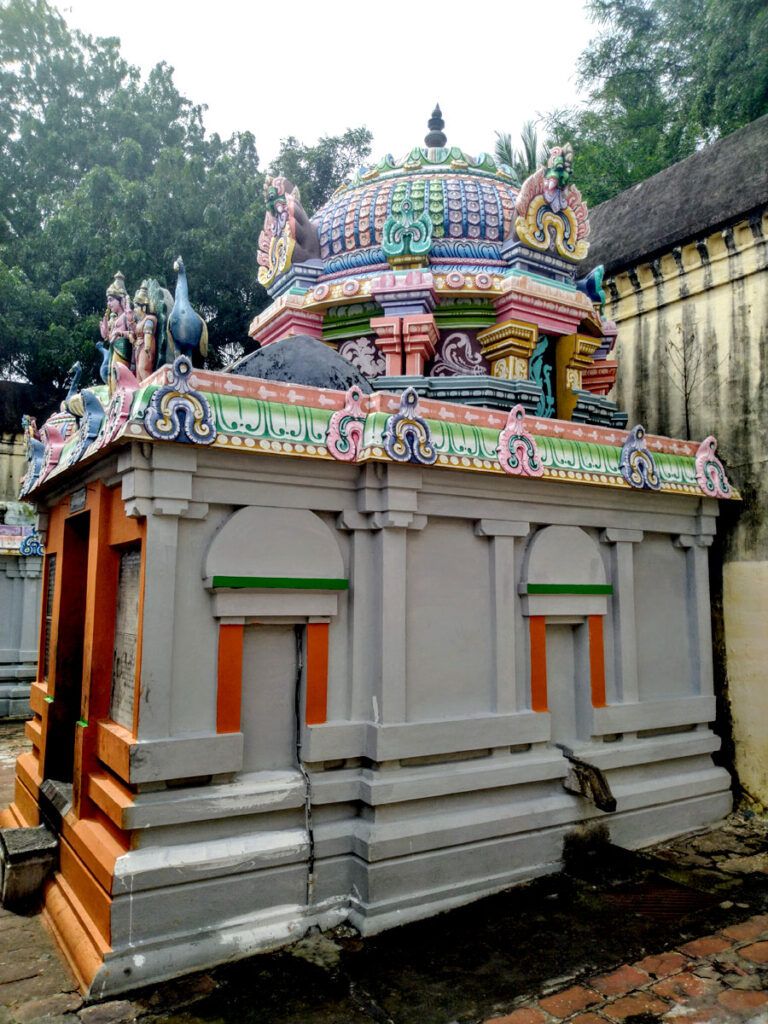
Significance of Kottaiyur Kodeeswarar Temple:
Religious significance: The temple is one of the 276 Paadal Petra Sthalams, which are considered to be the holiest of Shiva temples. Devotees from all over India and the world visit the temple to worship Shiva and seek his blessings.
Historical significance: The temple is believed to have been built in the 8th century by the Pallava king Nandivarman II. It has been renovated and expanded over the centuries by various dynasties, including the Cholas, Pandyas, and Vijayanagara rulers. This makes it a valuable historical site that reflects the changing religious and cultural traditions of Tamil Nadu.
Cultural significance: The temple is an important part of the local culture. It is a place where people come together to celebrate festivals, perform religious rituals, and learn about their faith. The temple also helps to promote tourism in the area.
Places to visit near Kottaiyur Kodeeswarar Temple:
Adhi Kumbeswarar Temple, Kumbakonam is a Hindu temple dedicated to Shiva. It is one of the 12 Jyotirlingas, or the holiest of Shiva temples in the world. The temple is located on the banks of the Cauvery River and is a popular pilgrimage destination.
Swamimalai Murugan Temple is a Hindu temple dedicated to Murugan, the son of Shiva and Parvati. It is one of the six abodes of Murugan and is located on the top of a hill in Swamimalai. The temple is a popular tourist destination and is known for its beautiful architecture and scenic views.
Thirupparangkundram Murugan Temple is a Hindu temple dedicated to Murugan. It is one of the six abodes of Murugan and is located on the banks of the Kaveri River. The temple is a popular tourist destination and is known for its beautiful architecture and sculptures.
Darasuram Brihadeeswarar Temple is a Hindu temple dedicated to Shiva. It is a UNESCO World Heritage Site and is one of the finest examples of Dravidian architecture. The temple is located in Darasuram, a village about 10 kilometers from Kumbakonam.
Kalyanallur Nataraja Temple is a Hindu temple dedicated to Shiva in the form of Nataraja, the cosmic dancer. It is a UNESCO World Heritage Site and is one of the finest examples of Chola architecture. The temple is located in Kalyanallur, a village about 20 kilometers from Kumbakonam.
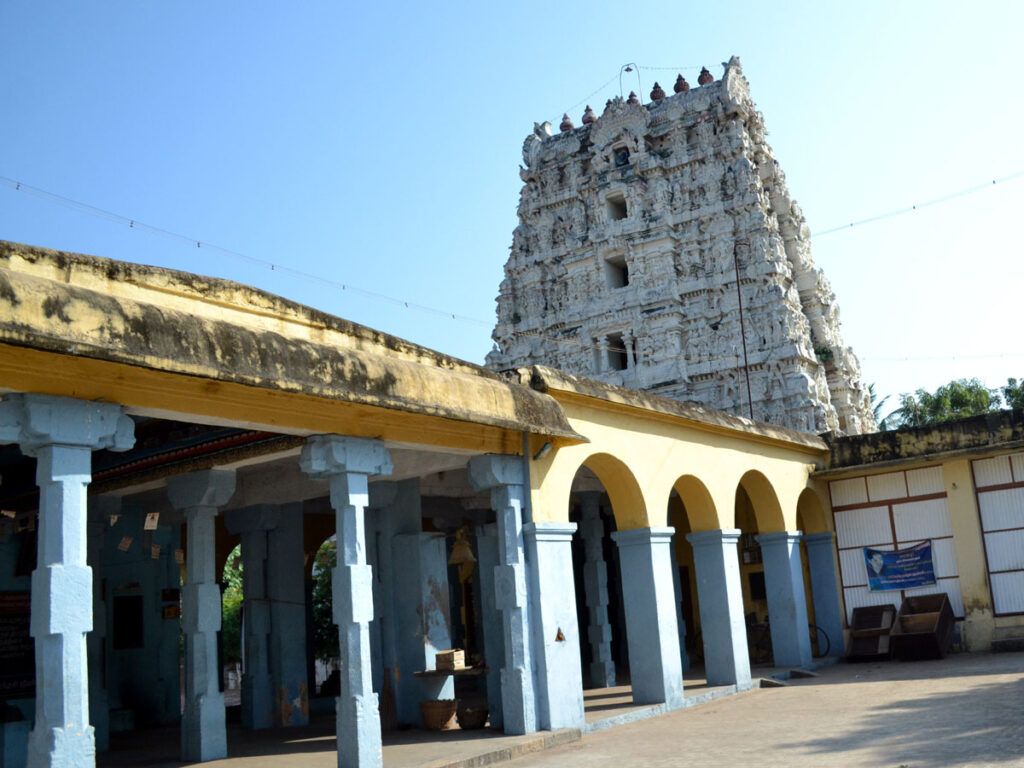
FAQ:
Where is the Kottaiyur Kodeeswarar Temple located?
The Kottaiyur Kodeeswarar Temple is located in the village of Kottaiyur in the Indian state of Tamil Nadu. It is located about 12 kilometers from the town of Kumbakonam.
What is the history of the Kottaiyur Kodeeswarar Temple?
The Kottaiyur Kodeeswarar Temple is believed to have been built in the 8th century by the Pallava king Nandivarman II. The temple has been renovated and expanded over the centuries by various dynasties, including the Cholas, Pandyas, and Vijayanagara rulers.
What are the main features of the Kottaiyur Kodeeswarar Temple?
The Kottaiyur Kodeeswarar Temple is a large and complex temple complex. The main temple is dedicated to Shiva, and it has a 10-tiered gopuram, or tower, at the entrance. The temple also has shrines dedicated to Vishnu, Lakshmi, Parvati, and other Hindu deities.
The temple is known for its beautiful sculptures and carvings. The walls and pillars of the temple are decorated with intricate carvings of Hindu gods and goddesses, as well as scenes from Hindu mythology.
What are the festivals celebrated at the Kottaiyur Kodeeswarar Temple?
The Kottaiyur Kodeeswarar Temple celebrates a number of festivals throughout the year. The most important festival is the Maha Shivaratri festival, which is celebrated in February or March. This festival is a time for devotees to gather at the temple to worship Shiva.
Other festivals celebrated at the temple include the Navaratri festival, the Karthigai Deepam festival, and the Panguni Uthiram festival.
How can I get to the Kottaiyur Kodeeswarar Temple?
The Kottaiyur Kodeeswarar Temple is easily accessible by road, rail, and air. By road, the temple is located about 12 kilometers from Kumbakonam. By rail, the nearest railway station is Kumbakonam Junction. By air, the nearest airport is Tiruchirapalli International Airport.
What are the opening hours of the Kottaiyur Kodeeswarar Temple?
The Kottaiyur Kodeeswarar Temple is open from 6:00 AM to 12:00 PM and 4:00 PM to 8:00 PM. The temple is closed on Mondays.
What are the entry fees for the Kottaiyur Kodeeswarar Temple?
The entry fee for the Kottaiyur Kodeeswarar Temple is ₹5 for adults and ₹2 for children.
What are the dress codes for the Kottaiyur Kodeeswarar Temple?
Dress codes are strictly enforced at the Kottaiyur Kodeeswarar Temple. Men must wear full-length pants and shirts with sleeves. Women must wear skirts or dresses that cover the knees. Shoes must be removed before entering the temple.
What are the things to keep in mind while visiting the Kottaiyur Kodeeswarar Temple?
Here are some things to keep in mind while visiting the Kottaiyur Kodeeswarar Temple:
- Dress modestly and respectfully.
- Remove your shoes before entering the temple.
- Be aware of your surroundings and do not leave your belongings unattended.
- Do not take photographs or videos of the interior of the temple without permission.
How to reach Kottaiyur Kodeeswarar Temple:
The Kottaiyur Kodeeswarar Temple is located in the village of Kottaiyur, which is about 5 kilometers north-west of Kumbakonam in the Thanjavur district of Tamil Nadu, India.
By road
The temple is easily accessible by road from Kumbakonam. Take the Kumbakonam-Swamimalai road and turn left at the Kottaiyur junction. The temple is located about 1 kilometer from the junction.
By bus
There are frequent buses from Kumbakonam to Kottaiyur. The buses depart from the Kumbakonam bus stand and take about 15 minutes to reach Kottaiyur.
By taxi
Taxis are also available from Kumbakonam to Kottaiyur. The taxi fare is about ₹100.
By train
The nearest railway station to Kottaiyur is Kumbakonam Junction. From the railway station, take a taxi or bus to Kottaiyur.
By air
The nearest airport to Kottaiyur is Tiruchirapalli International Airport. From the airport, take a taxi or bus to Kumbakonam and then a taxi or bus to Kottaiyur.
